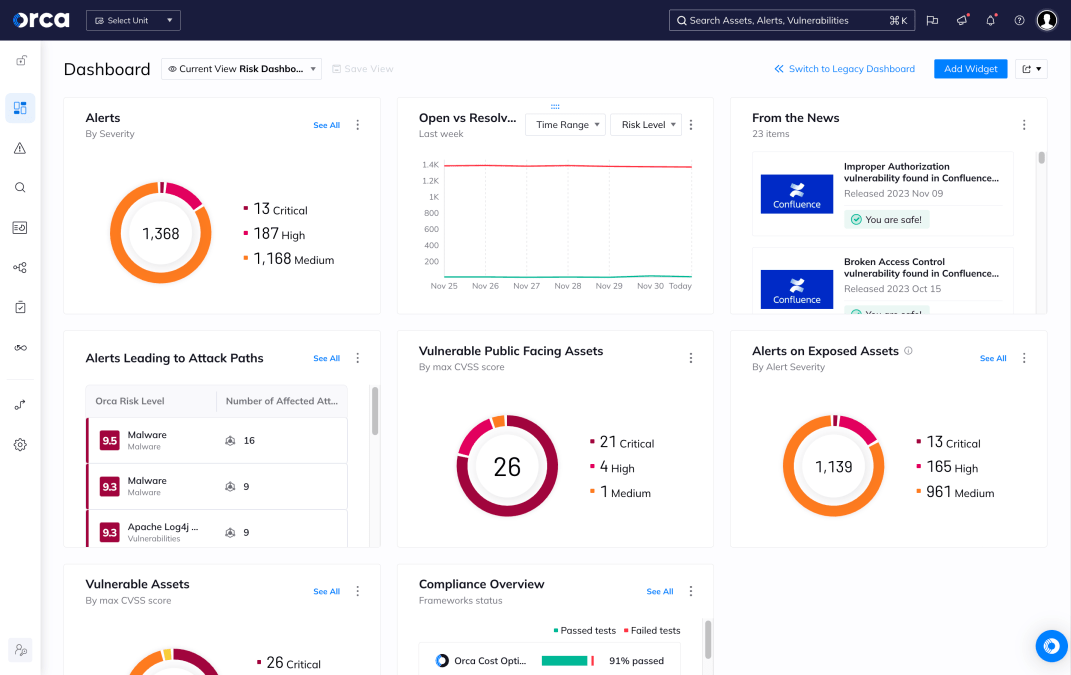A false positive in cybersecurity occurs when a security tool incorrectly identifies legitimate behavior or activity as malicious. This leads to unwarranted alerts, blocked access, or disrupted services. In cloud environments, false positives are common due to the scale and complexity of modern infrastructure and workloads. While less dangerous than false negatives in terms of immediate breach risk, false positives can significantly reduce security team effectiveness and disrupt business operations.
What is a false positive?
In cloud security, a false positive refers to an alert or detection that flags harmless activity as suspicious or dangerous. For example, a security system may flag an automated infrastructure deployment as a potential attack or incorrectly quarantine a trusted file during routine operations.
Unlike true positives (which correctly detect threats) or false negatives (which miss threats), false positives represent cases where systems err on the side of caution but introduce inefficiency and noise.
They are especially prevalent in environments with automated detection tools, where cloud-native behaviors like autoscaling, dynamic permissions, and ephemeral workloads are not always fully understood or accounted for by legacy detection rules.
Why false positives matter
Although false positives do not represent real security threats, their operational impact can be substantial:
- Alert fatigue: Excessive false alerts can desensitize analysts, increasing the chance that real threats are ignored or overlooked.
- Operational disruption: Blocking legitimate traffic or users can halt critical business functions, especially in highly automated cloud environments.
- Wasted resources: Investigating and triaging false alerts consumes time and attention that could be spent addressing real issues.
- Reduced trust in tools: Teams may lower detection thresholds or disable alerts altogether, increasing the risk of undetected threats (false negatives).
False positives are especially dangerous in high-velocity environments where decisions must be made quickly, as they slow response times and burden overextended security operations centers (SOCs).
How false positives happen
Several factors contribute to false positives in cloud environments:
- Poorly tuned detection rules: Overly broad signatures or conservative policies can flag normal activity as malicious.
- Lack of contextual awareness: Tools that lack insight into business context (e.g., known maintenance windows or legitimate third-party access) may misinterpret standard behavior.
- Cloud-native complexity: Dynamic scaling, multi-region deployments, and frequent changes in infrastructure can create patterns unfamiliar to static detection systems.
- Insufficient baseline data: New environments or limited historical data can confuse machine learning models, leading to misclassifications.
- Tool fragmentation: Disconnected tools without unified context may generate conflicting or redundant alerts.
False positives often increase as organizations deploy more tools without centralizing detection logic or prioritization.
Key risks and challenges
- Overwhelmed analysts: High alert volumes dilute analyst focus and degrade overall security response.
- Blocked services or users: False positives can lead to unnecessary access restrictions or downtime.
- Policy misalignment: Rules not tailored to the organization’s environment often result in high noise-to-signal ratios.
- Erosion of detection quality: In attempts to reduce alert noise, teams may disable or loosen controls, increasing the risk of real threats being missed.
Best practices to reduce false positives
Organizations can adopt several best practices to mitigate false positives and maintain operational efficiency:
- Refine detection rules: Regularly tune and validate rules to reflect real-world behavior and reduce misclassification.
- Understand cloud context: Ensure monitoring tools integrate with cloud APIs and management layers to distinguish between routine events and anomalies.
- Correlate data sources: Combine logs, configurations, and user activity to better identify true threats versus harmless events.
- Use risk-based prioritization: Focus on alerts with high likelihood and high impact, filtering out low-risk or low-confidence detections.
- Incorporate feedback loops: Analysts should provide feedback on alert accuracy to help tools learn and adapt.
- Segment alerts: Use alert scoring or tiering to separate routine events from potential high-impact issues.
Automated alert enrichment—adding context such as asset criticality, time of day, or user identity—can also help improve accuracy.
How Orca Security helps
The Orca Cloud Security Platform helps reduce false positives across the cloud environments of AWS, Azure, Google Cloud, Oracle Cloud, Alibaba Cloud, and Kubernetes. Orca provides full coverage across your entire cloud estate and analyzes risks holistically, in context, and according to a comprehensive set of dynamic risk- and asset-based factors.
This allows teams to focus only on issues that truly matter, reducing alert fatigue and operational noise.



